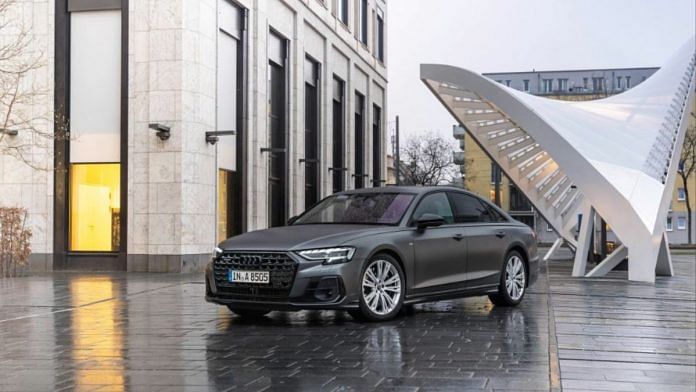2022 will go down as the year when Indian automotive exports hit new highs. Volkswagens to Mexico, Suzukis to South America and Hyundais to Africa. All these vehicles boarded the massive roll-on, roll-off car ships from various ports in India. Yes, despite domestic waiting lists exceeding several months in some cases, exports are rocking.
But that is not the whole story.
India is manufacturing cars and sheets of metal are being pressed into shape and welded in Haryana, Maharashtra and Tamil Nadu. But this is not where India is playing its biggest role in the global automotive industry. Away from the loud stamping dyes and welding robots, a ‘near silent revolution’ is taking place in Whitefield (Bengaluru) and Cyberabad (Hyderabad) where the clicks of keyboards dominate. As cars become increasingly driven by software, it is India where that code is being written.
Also read: Why Indian Car of the Year is the most trusted automotive award that everyone wants
Cars and codes
Take Mercedes-Benz Research and Development India (MBRDI). Some 7,500 employees and 4,000 contractors in Bengaluru are doing cutting-edge work. But as Manu Saale, managing director, MBRDI told me, every Mercedes-Benz sold anywhere in the world has a little bit of India inside. That is quite an achievement for the German brand, which sells only around 15,000 cars every year in India. And while they assemble cars at their plant in Chakan, outside Pune, none of them is actually ‘manufactured’ in the classic sense because the plant lacks metal stamping dies and welding robots.
Indian software engineers are writing the code that control everything in the cars you buy. From engine management to the infotainment systems.
“Our engineers are supporting the digital development of the car in all its aspects. As software-driven vehicles take centrestage, we will have an increasingly large role to play in the transformation of our company (Mercedes-Benz). But it is impossible to imagine that any car sold today does not have a piece of India in it,” said Saale.
In fact, several car companies, including American giants General Motors and Ford, who have both left the India market, do a huge amount of their software development work in India. In Hyderabad, Hyundai Motor Group is developing some of their core software technologies for the future in India as well. Just a couple of weeks ago, Swedish carmaker Volvo announced that they too would take advantage of India’s IT prowess by establishing a digital technology hub in Bengaluru.
Saale, who is a part of NASSCOM (the National Association of Software and Service Companies) committee on Engineering Research and Development (ER&D) said that the next big contribution India can make is more than “just being the back office of the world and also move towards product development. So moving from a $30 billion contribution today, as per my statistics, we want to grow the contribution of ER&D from India to $100 billion soon.”
Also read: Kudos to Mahindra for getting safety right with Scorpio-N. Now educate drivers too
India possibilities
In fact, as my conversation with Saale moved toward the growing trend of autonomous driving and advanced driver assistance systems (ADAS), he mentioned that as an engineer, he is intrigued by the possibilities, particularly in markets like India where traffic conditions are chaotic, and not just developed markets. “What is common between the two markets is that the time I spend commuting is increasing and if I can give that time back to you, you will find interesting new ways of utilising that.” It is not just work and meetings in cars, but also the myriad possibilities with entertainment. “We have visions of all that when autonomous comes to its full power. I think the possibilities are endless, think of the car screen as the one ‘unconquered’ screen so far.”
Asked whether he sees the likes of Apple and Google, whose in-car systems Apple CarPlay and Android Auto often substitute the carmakers’ own operating systems and navigation tools, Saale said: “There are challenges to the ecosystem that a mobile phone provides and those that an automobile provides. We do see overlaps, but where I have a challenge is that when you leave the car you carry your phone with you and you leave your car in your garage. And the answer to that, as far as we at Mercedes-Benz are concerned is the MBOS (Mercedes-Benz Operating System). There are things that you do while driving that you do not do while sitting with your mobile.”
But while Saale sees a fantastic vision of the automobile future, the here and now is this future where cars are increasingly driven by software. Where an over-the-air update on 5G and future mobile networks can dramatically transform your vehicle. All this will be ‘Made In India’— just not the way that cars were made before.
@kushanmitra is an automotive journalist based in New Delhi. Views are personal.
(Edited by Anurag Chaubey)



